The fruit of deceit
The fruit of deceit
15 January 2024 - 15 March 2026
Block 39, Level 2 corridor, staircase and service balcony facing port
Tanjong Pagar Distripark, Singapore
An extension of Sea of flags, part of Port/raits of Tanjong Pagar
Commissioned by The Everyday Museum, a public art initiative by Singapore Art Museum

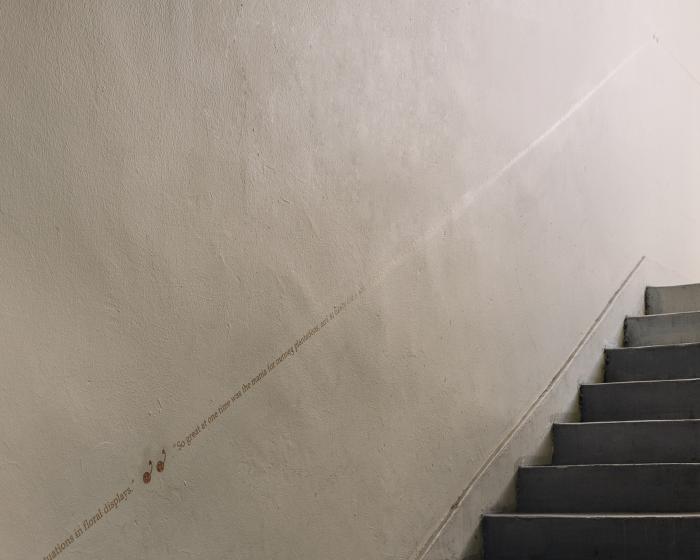
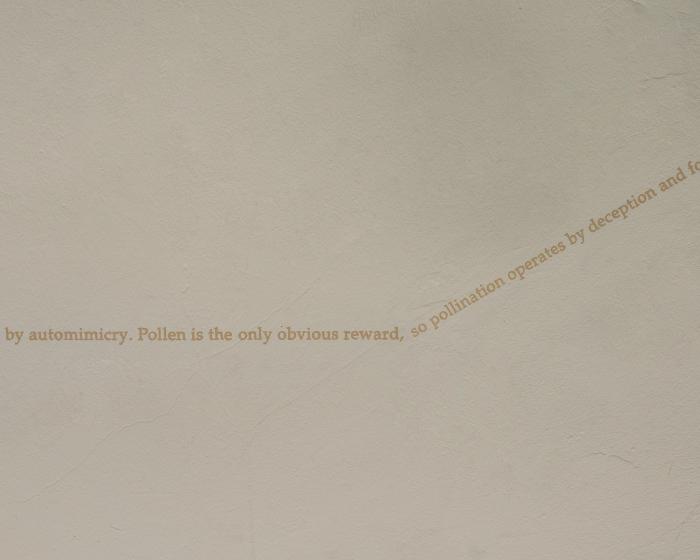
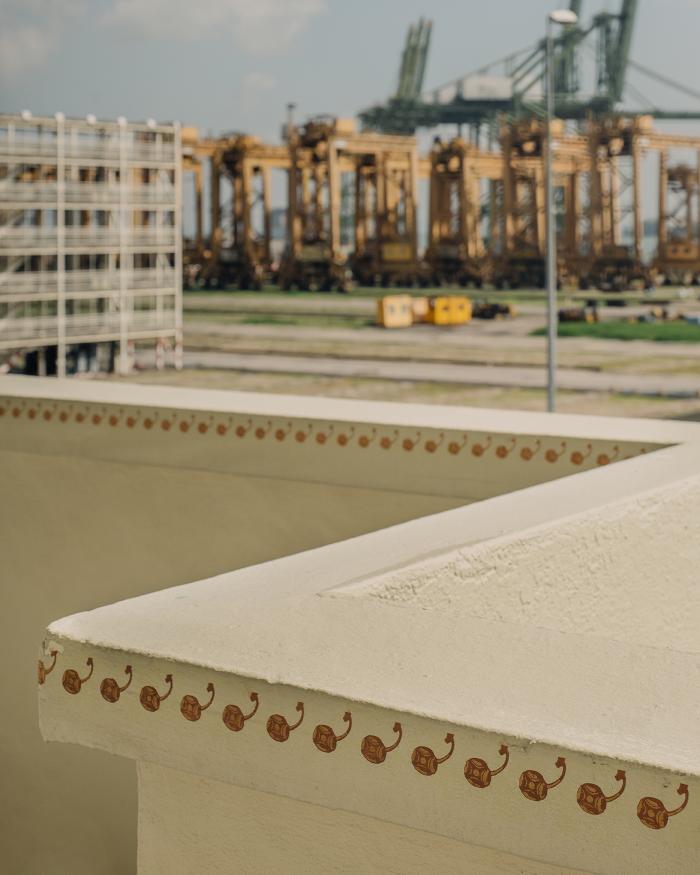
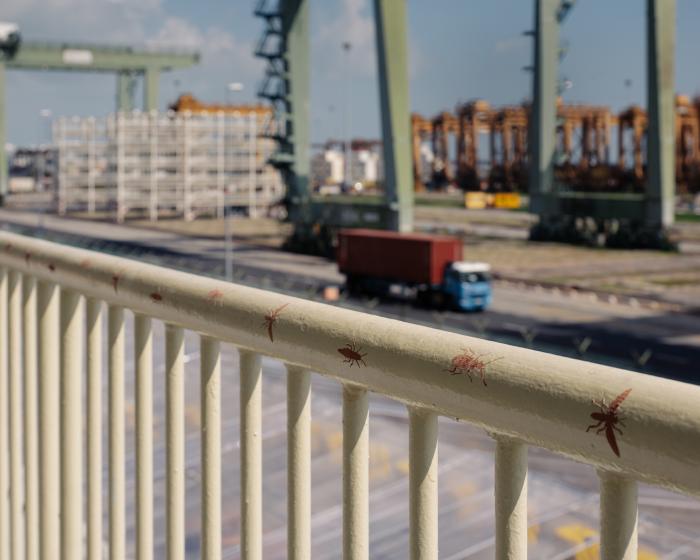

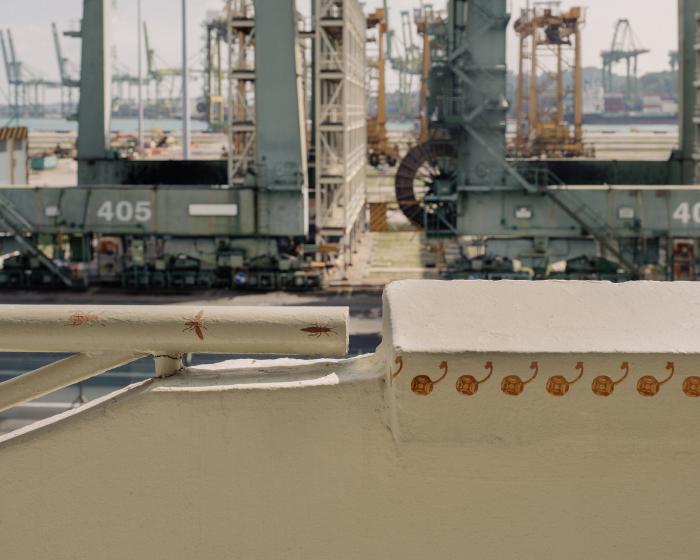
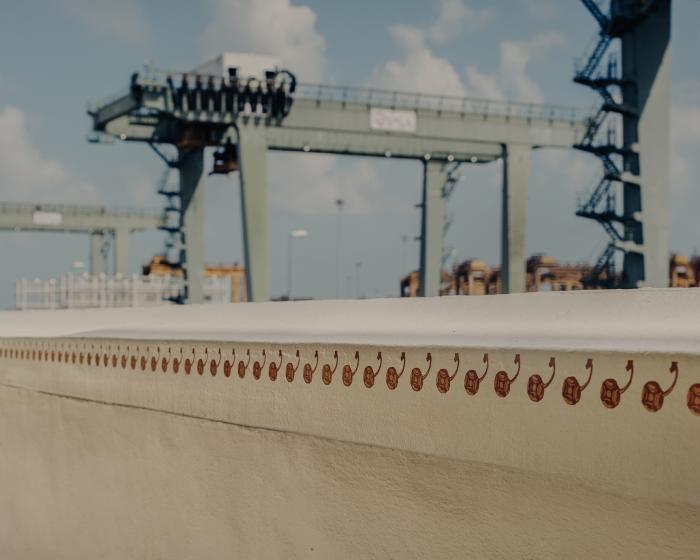
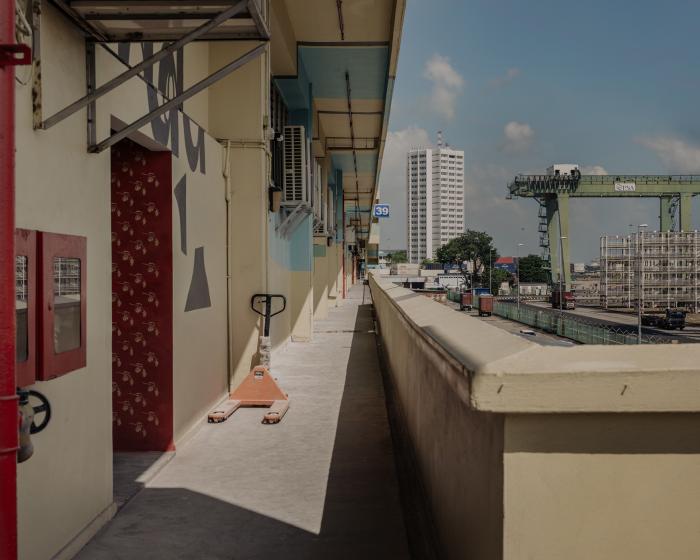
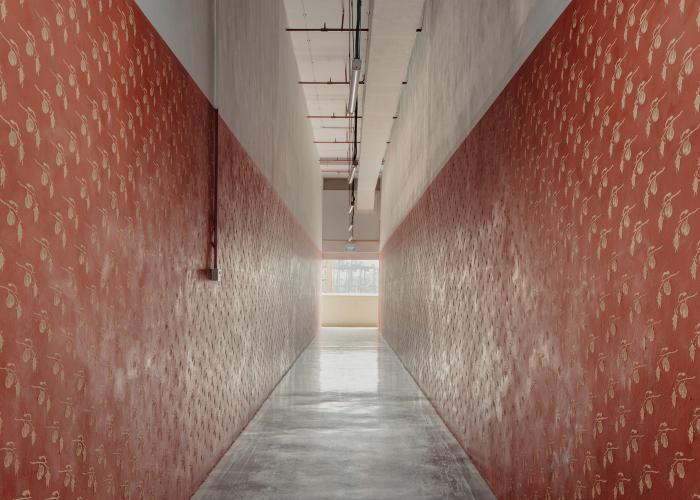
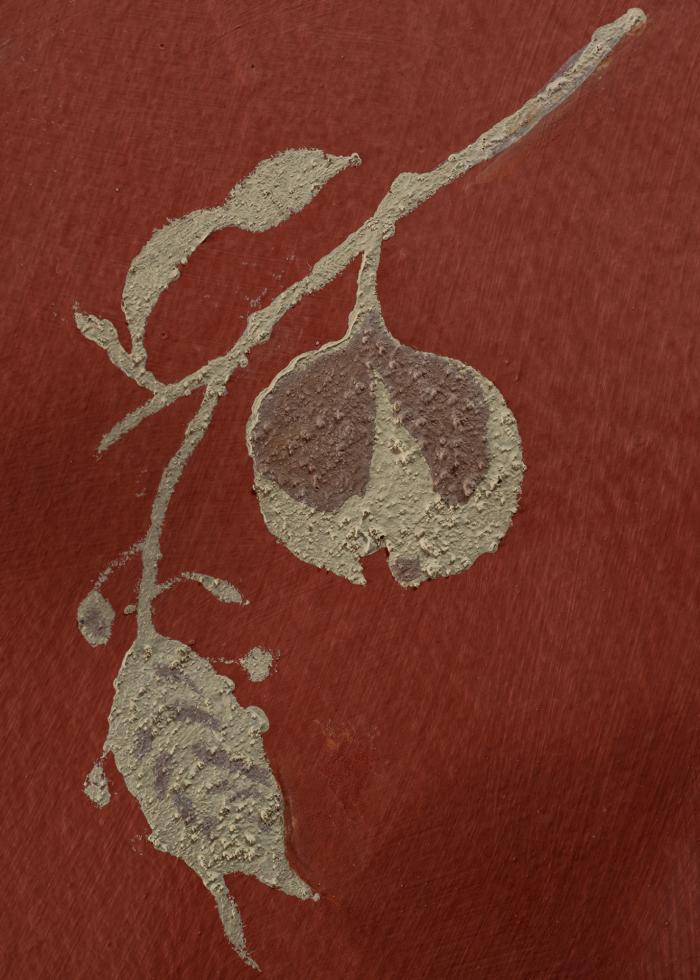
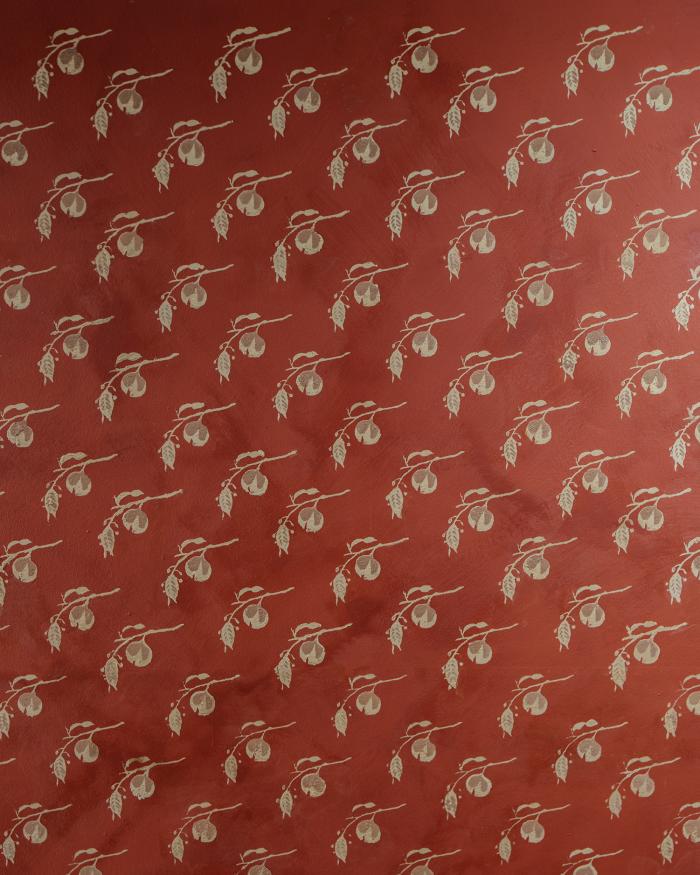

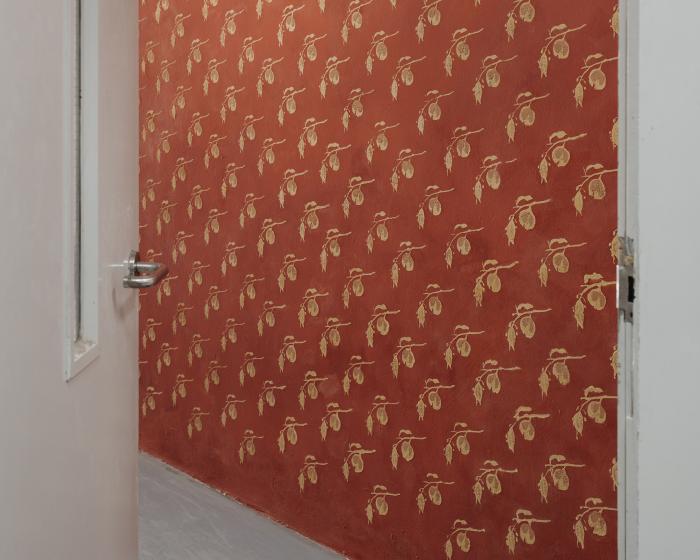
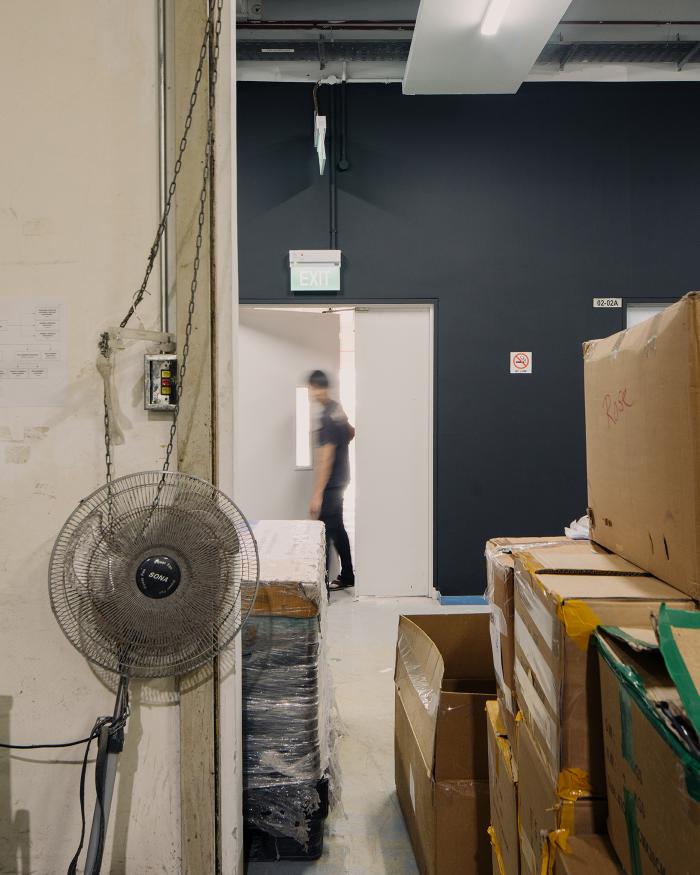
At Block 39 of Tanjong Pagar Distripark, delicate floral garlands, pollination trails and nutmeg fruits embellish an exterior staircase and passageway. When first applied, the stencilled motifs in lime plaster and ground nutmeg emit a fleeting fragrance, reminiscent of how sailors in the 16th century claimed to detect the Banda Islands by their scent. Since the 6th or 7th century, nutmeg has been a rare and exotic spice from the “Far East” that influenced European taste and culture. Commercial nutmeg products today may seem unremarkable, but as one of the vestiges of Singapore’s colonial economy, it is synonymous with the promise of wealth, albeit one that turned out to be flawed.
Nutmeg [Myristica fragrans] was brought into Singapore in 1819 by Stamford Raffles in a bid to transform the island into a botanical research powerhouse of the British empire. The 1840s saw a period of “nutmeg mania” where large swathes of dense virgin forest lands were cut down for the cultivation of nutmeg trees in order to carry out the vision that “this island should all be cleared and cultivated; in fact become a large Garden.” One of these ambitious gardens was William Montgomerie’s residence, which was located amidst a 13 hectare nutmeg plantation with 1,800 trees in Duxton Road.
The fruit of deceit is a site-specific response to the history of Tanjong Pagar and its evolving identity. The notion of nature as a commodity is foregrounded here against the physical site of the old Keppel Harbour and present-day Tanjong Pagar Distripark—logistical nodes from different eras that facilitate the circulation of materials, goods, ideas, people and capital.
The gesture of overlaying the grimy surfaces of the building with a decorative stratum of nutmeg images subverts the identity of the place, while also creating new meaning. Applied deliberately in a repeated pattern, the surface embellishment is a human designed representation—an intervention to mark and colonise the space through the introduction of a foreign element. The nutmeg motifs in The fruit of deceit were taken from 19th century natural history illustrations that typically show a ripe nutmeg with the “red mace shining through the ruptured husk” and small inconspicuous lobed flowers. A plant that has both male and female reproductive organs but in separate individuals, the overabundance of female flowers functions as a trickery as only the lesser male flowers provide pollen. Nutmeg floral biology has no relation to its cultivation history in Singapore, but the concept of “pollination by deceit” uncannily parallels humanity’s precarious attraction to nature by terraforming the earth for the sake of “improvement.”
Nearby, in Grace’s other work, Sea of flags, 28 out of the 398 flags display colours referenced from the seed, mace, kernel, and skin of nutmeg. Each colour comes with a HEX code and corresponding RGB code, which was then printed onto a PVC sheet and made into a flag. The fruit of deceit extends this colour compendium of Tanjong Pagar through alluring visuals of the nutmeg, alluding to its slighted history in Singapore’s development.
Source | Singapore Art Museum
Photography by KHOOGJ